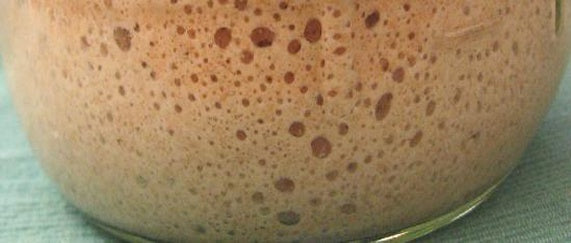What is Sourdough?

Sourdough is the traditional process used to leaven (rise) wheat, rye or other grains through a simple yet amazing symbioses of wild yeast and bacteria.
Wild yeast and bacteria naturally exist on the surface of all flours. By adding water and sometimes a 'seed' (a helper, such as the skin of a grape or some rye flour) to the flour, these yeast and bacteria activate and begin to consume the flour.
Once the water is added, it begins breaking down the starches, which is then fed on by the yeast, followed up by the bacteria which feed on the yeast products. The yeast and bacteria become a balanced symbiotic mix after repeated feedings. Pockets of air are trapped in the dough as they digest, and flavor is created by their by-products. Thus creating a flavorful, naturally leavened dough. This symbioses requires a longer rising time for the dough than the modern baker's yeast.
Civilizations have used wild yeast for over 5,000 years. Baker's yeast was invented just 100 years ago for the purpose of singling out one type of yeast for its strong rising ability and its reliability, but at a great loss to the unique flavor and natural process of traditional wild yeast breads.
Naturally leavened bread has a multidimensional flavor and because of the longer rise, it will sometimes also impart a 'sour' flavor to the dough - thus its name!
Learn More About Sourdough:
- Sourdough Overview
- How to Make Sourdough (Step-by-Step Instructions)
- Meet our Sourdough Starter
- The Difference Between Commercial Sourdough and Homemade Sourdough
- Sourdough Fun Facts
- Sourdough Dictionary
- Sourdough Mini Picture Guide and Interpretation
- Preparing Your Starter Before Baking
- Feeding, Vacation & Storage of Sourdough
- Starter Troubleshooting
- Baking Troubleshooting
- Baking Conversion Chart
- Sourdough Recipes
- Gluten-free Sourdough Recipes
- Sourdough Varieties of the World
- Sourdough Pictures
- Sourdough Videos
- Purchase a Sourdough Starter


